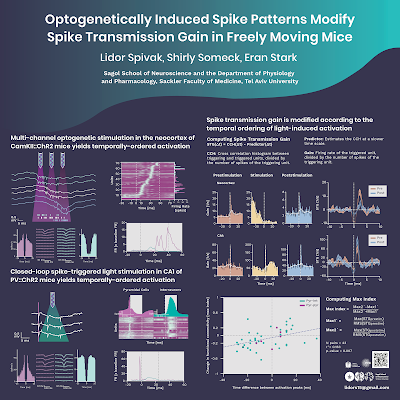My given name (Zen) is an ambiguous gender signal. I know both
men and
women with the same first name as me. I understand that other people often want to know someone’s gender, and that people may want to explictly state how they like being referred to.
For those reasons and others, some conferences have started adopting the practice of putting pronouns on conference badges. The point is to try to reinforce that different people might have different ways they want to be addressed, thereby creating a more welcoming environment to all.
Nelson Stauffer
suggests extending this practice to posters.
Approach to pronouns on a poster? Just add more superscript characters.
Nelson tweeted this image as an example.
I’m not crazy about this particular implementation of the idea, because the symbols that Nelson used (a dagger and a double dagger) are hard to distinguish in this particular font, particularly at small size.
Is this a good idea more generally?
Probably.
Adding pronouns adds visual complexity. You have to match the symbols, the pronouns, and the names, and do a dance back and forth between the three for each author. That’s a lot of cognitive load to ask someone to take on in a busy poster session.
The suggestion here is to put the symbols and pronouns in the title bar, part of the poster which can be
overloaded with authors’ names and affiliations.
A good general rule in graphic design is, “Put information at the point of need.” People are most likely to want to know preferred pronouns when they are having a conversation with someone. That makes an excellent case for putting pronouns on name tags because if you can read someone’s name tag, you’re close enough to be having a conversation with that person.
If pronouns are already on name tags, putting pronouns on the poster is duplicate information. If pronouns are not on name tags, the argument for putting those pronouns on the poster is
much stronger.
Similarly, adding pronouns for the poster presenter makes a lot of sense. Again, knowing pronouns can be valuable when you are conversing with someone, which is most likely when you are speaking to a presented.
Adding the pronouns for
all presenters may be overkill. If you have a poster with a long author list, there may be many authors who are not at the conference at all. So on the one hand, adding pronouns for all authors is consistent. On the other hand, are the pronouns of all the individuals participating in a project – who may or may not be at the conference – something that a viewer needs
at that moment?
Some authors may not want their preferred pronouns on the poster. Authors who are not at a conference may not want to disclose something about their pronoun use to everyone in attendance.

Some people have argued for going in the opposite direction (more with scientific papers than posters) on pronouns. That is, some prefer to display only initials rather than given names to downplay gender and minimize bias. Many women writers (like
Star Trek’s Dorothy Fontana) used their initials for their author credit for this reason.
If you want to include pronouns, many of the tips regarding
showing institutional affiliations might be helpful here.
Related posts
Showing authorship on posters















